
A partnership between Auckland Council, adhesives company Selleys, and peanut butter producers Nut Brothers is deploying 22,000 rat bait blocks and 160kg of peanut butter. The Talon wax blocks will be used in continuing trapping efforts on the Hauraki Gulf Islands and in remote rural areas as part of the Pest Free Auckland Programme:
According to Brett Butland, Auckland Council’s Pest Free Auckland Director, an unusually high seeding led to a wealth of food for native species. This has also fueled high populations of pests such as rats and stoats. These pests pose a serious threat to native wildlife as predator populations build up during the spring and summer months.
“We want to stay ahead of the game and ensure our predator free islands remain that way.”
“We know that rats prefer organic oils – like the ones contained in peanut butter – and they’re more likely to draw the pests to the bait stations. The rat bait and peanut butter work really well together.”
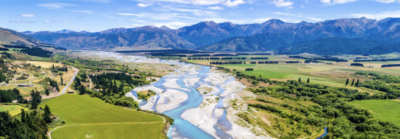
The Ministry for the Environment has launched consultations on improving management of New Zealand’s rivers and lakes: “Action for Healthy Waterways: A Discussion Document on National Direction for our Essential Freshwater”.
As the discussion document notes our fresh water is suffering as a result of human activity, primarily from urban development, agriculture, horticulture and forestry. Urgent action is required to stop an already bad situation getting worse. Proposed action includes: better management of stormwater and wastewater no further loss of wetlands and streams tighter controls to prevent sediment loss from earthworks and urban development farmers and growers understanding and managing environmental risks and following good practice new standards and limits on some farming activities in some regions or catchments.
Beyond those proposals the Government is also working on other parts of its plan for freshwater, including allocation of allowances to discharge nutrients, institutional/oversight arrangements for the freshwater management system, and addressing Māori rights and interests in freshwater.
It is important that you have your say on these landmark reforms. Submissions will be accepted until 31 October 2019.
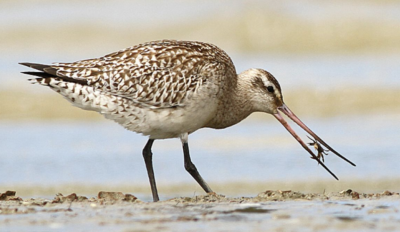
The Government made its intention clear with the announcement to protect a flight path of a species of native birds who frequent the Thames coast before flying to the Arctic.
The announcement, which was made by Prime Minister Jacinda Ardern and Conservation Minister Eugenie Sage, signals that the Yellow Sea is now classified as a World Heritage site.
The Red Knots and Godwits fly from the Firth of Thames to their breeding ground every year which is a 12,000km journey.
Red knots breed in Siberia, while the godwits breed in Alaska. Both the red knots and godwits land at wetlands in China to refuel, before flying on to their breeding sites.
However, due to the mudflats around the Yellow Sea being destroyed by development, there has been a decline in shorebirds numbers.
“This recognises the importance of retaining mudflats,” Sage said.
“We’ve seen the loss of about two thirds of mudflats in that area, but now China is committing to their protection.
“It’s really great news for godwits and knots and it makes their journey a bit safer.”
The specific sites the birds use will be part of a Yellow Sea World Heritage proposal to be developed by China with support from other partners in the East Asian-Australasian Flyway Partnership.
The East Asian-Australasian Flyway for migratory birds extends from Awarua Bay in the south of New Zealand and crosses China on its way to the North Slope in Alaska.
“Equally important is the work being done on this side of the Pacific. The recent acquisition of the Robert Findlay Reserve at Miranda was a significant local contribution to the conservation of migratory shorebird habitat in New Zealand,” Sage said.
Prime Minister Jacinda Ardern said New Zealand was part of an international community that had a duty of care, and also commended the work done by volunteers and supporters of the Pukorokoro Miranda Shorebird Centre.
“You are creating an environment where the next generation will feel motivated to continue the conservation work that you’re doing, not just here but globally.
“You have my word that when I get the opportunity, I am happy to continue the diplomacy you’ve been undertaking.
“If it’s not to advocate for our people but to also act as guardians and demonstrate kaitiakitanga to the birdlife that call New Zealand part of their migratory routes.”
Centre manager Keith Woodley said the profile of the country’s shorebirds needed to be raised and likened their voyage to humans doubling their weight and running a marathon.
“That’s essentially what these birds are doing,” he said.
“They double their weight and they go on this huge endurance flight. Of course, we couldn’t do it, but they are superbly equipped and adapted to doing it.”
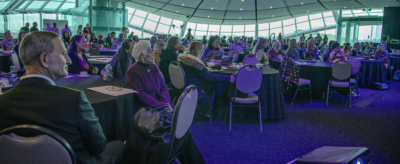
The 2019 Hauraki Gulf Marine Park Conference – Making Waves: Protecting and Restoring the Marine Park – saw over 250 participants flock to Auckland’s War Memorial Museum at the end of August. The annual event, which was held on August 27, saw an audience treated to a range of engaging and interactive presentations about the Marine Park which can be viewed here (http://gulfjournal.org.nz/seminar-talk/?seminar-name=2019-making-waves), but they also had the opportunity to participate in group sessions as a collaborative approach to further shape the Forum’s recently announced Big Goals of at least 20% marine protection and 1000sq kilometre of shellfish restoration.
The Holdaway Awards, which recognise extraordinary contributions to the Marine Park were presented to Betty Whaitiri Williams, former inaugural member of the Hauraki Gulf Forum, and posthumously to Roger Grace, marine biologist who passed away earlier this year.
The Conference also featured a keynote address from the Minister of Conservation at which the Government announced new funding for shellfish restoration (see: https://www.beehive.govt.nz/release/government-helps-fund-efforts-restore-shellfish-beds-hauraki-gulf) and several youth focused elements including a youth panel, virtual reality experience by NZ Geographic and BLAKE, and a view of the future from Young Ocean Explorers. Finally, conference participants worked together on the elements for a potential future vision for the Marine Park.

“In the 1980s I helped my Grandfather sink his old freezer in the harbour. It was a fun outing and a good challenge, afterwards I wondered what might inhabit the new white cave on the seafloor. Now days we all know better and I hate to think what toxic chemicals leaked out of that old machine and poisoned the bay,” anonymous New Zealander
A recent Ghost Fishing New Zealand event was held in Okahu Bay to help clean up the seafloor. The detrimental effects of lost fishing gear and rubbish was documented through video and photography.
Over the last four years, Ghost Fishing New Zealand (GFNZ) has worked diligently in cleaning open water spaces. These divers were inspired by overseas divers and named themselves after the ghost nets lost by commercial fishers that they retrieve. The team often pull tonnes of rubbish up from the deep in just a few hours using lift bags.
A station is set up at the event dedicated to sifting through the collection to extract mobile marine life from the rubbish.
“My job was to photograph the species as they were being removed by volunteers under the supervision of marine biologist Eddie van Halen Howard. Adults and children alike crowded around each piece of trash as it came ashore and Eddie enthusiastically identified and told stories about each animal,” – Shaun Lee
The highlight has to be this rarely seen Porcelain Crab (Petrocheles spinosus). It seems to be the first photograph of its species in the wild, though in this case the habitat had been moved.”
If you would like more information about Ghost Fishing NZ, please visit them here or better yet follow them on Facebook.

It was a momentous occasion.
A newly released book captures the significance of Hauturu Little Barrier Island and the ecological identity of this wonderful natural reserve.
Hauturu: History, flora and fauna of Little Barrier Island was launched at the Auckland Museum in September featuring key note speakers including editors Lyn Wade and Dick Veitch, along with The Little Barrier Supporters Trust patron Ruud Kleinpaste.
One of the evening’s highlights were the key insights, examples and experiences from the speakers who spoke about the historical significance of Hauturu and about the future of conservation in Aotearoa New Zealand.
Marine protection for the Hauraki Gulf was also noted as a shared vision for many who live, work and thrive on the Gulf.
Representatives of Ngati Whatua Orākei and Ngati Manuhiri also welcomed the crowd of several hundred attendees and highlighted the importance of Hauturu to mana whenua.
This important piece of literature is now available from booksellers nationwide. However, for those who wish to support the work of the Littler Barrier Island (Hauturu) Supporters Trust we encourage you to purchase a copy directly from the Trust.
For more information or to purchase a book, please follow the link below to the Trust’s website.
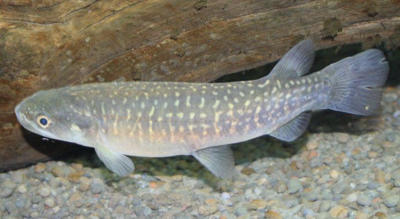
Conservationists are calling for continued action amid the increasing impact sediment is having on giant kokopu, one of Auckland’s rarest whitebait species.
The urgency comes from Auckland Council’s Freshwater Senior Regional Adviser Matt Bloxham, who says “Auckland doesn’t appear to have enough giant kokopu stream (source) populations to maintain high recruitment, because oceanic larval stocks are becoming depleted.”
Like other whitebait species, the young of giant kokopu spend time developing in the ocean before returning to adult habitat as whitebait in spring. “As adult populations are lost, we potentially add to this problem by reducing the oceanic larval pool and therefore also recruitment back into adult stream habitat.” Matt adds, “It’s akin to young kiwi folk going off on their OE but never returning home. Fewer young fish come back, the population ages and eventually dies out”.
This sediment issue is implicated in the noted decline of giant kokopu populations nationally and throughout mainland Auckland.
A remnant population at West Hoe Heights in Orewa was lost recently due to unmitigated sediment loss from a housing development into a nearby giant kokopu wetland. The Nukumea population in the neighbouring catchment is now coming under similar pressure.
A recent stocktake of known giant kokopu sites on the mainland found no fish at any of the 25-former giant kokopu sites. A handful of new (mainly island) sites have been found since, but they contain on average fewer than half a dozen fish and in some streams, a solitary fish remains.
However, the discovery of three geographically overlapping giant kokopu ranges on the south-eastern corner of Waiheke Island and another in Waitakere Regional Park increases the prospect of the species enduring in Auckland.
The first population found was in Awaawaroa Wetland in 2014, which resulted in the local community and Council mobilising to restore the population. More recently, there have been populations found in the neighbouring catchment to the east of Awaawaroa, and at Whatipu in the Waitakere Ranges.
However, a third population to the west of the Awaawaroa system, Whakanewha Regional Park, has recently disappeared “we think because of sediment loss from a gravel road higher up the catchment”, says Matt.
It turns out the population found to the east of Awaawaroa is the largest we have left in the region and the juveniles it disgorges into the ocean are likely to bolster the two nearby giant kokopu wetland populations.
“But even the largest population may become compromised if the two smaller populations (Awaawaroa and Whakanewha) are allowed fall away (i.e. it is likely that all 3 populations are underpinned by the same oceanic larval supply).
“While we will have to restock Whakanewha, if we act quickly and seal the sections of road that contribute sediment to Whakanewha, Whatipu and Awaawaroa, we may be able to sustain all three fisheries.”
“Major stochastic storm events of the type we are expecting more of with climate change have the potential to generate considerably more sediment and compromise kokopu populations in these rural and peri-urban environments. We are grappling with that at Awaawaroa, Whakanewha Regional Park, at Whatipu and in and around Orewa, where the species’ exposure to suspended sediment is high, particularly from roading.”
Matt says, “while gravel roads aren’t the only sediment source, they are one of the key sediment contributors in two of the Waiheke wetlands and are putting giant kokopu under particular pressure there”.
Mr Bloxham says “because the gravel on Waiheke has a high clay content, it only adds to the problem. Fine sediment is remobilized with every vehicle movement and stored in loose uncompacted drifts within the road corridor. At Whatipu, Whakanewha and at Awaawaroa, the close proximity of the gravel roads to their respective receiving freshwater environments means there’s very limited opportunity to intercept/settle out the sediment before it reaches the waterway and sealing is really the only option,” he said.
Auckland Council is responding to the issue of sediment loss to waterways from bulk earthworks sites and is working tirelessly to combat every angle of the issue. Matt says, “parallels can be drawn between earthwork sites and unsealed (gravel) roads. However, over their lifetime, dirt roads have the potential to be considerably more impactful as there are no sediment controls and release persists for as long as the roads prevail, whereas bulk earthworks are usually relatively short-term activities.”
Auckland Council aided by Forest and Bird, Conservation Volunteers NZ and the local community are working urgently to address the other threats to the island’s wetland populations, which include habitat loss and predation.
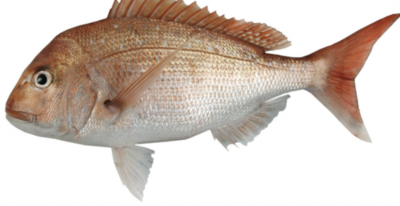
A Fisheries New Zealand national survey of recreational fishing has confirmed the ongoing importance of recreational fishing.
The National Panel Survey – which is conducted every 5 to 6 years – provides a snapshot of recreational fishing activity around the country, says Fisheries New Zealand director of fisheries management, Stuart Anderson.
“This is added to a wide range of other information to help us understand what is happening in our fisheries and inform our decision making over the next few years.
“One of the top-line results was confirmation of the ongoing popularity of recreational fishing. We estimate that 14 percent of the country’s population over the age of 15 years went fishing at least once during 2017-2018.
“We also found that recreational fishers catch a large proportion of key recreational fish species such as snapper, kahawai, blue cod, and kingfish. There’s been little change in the proportion of these fish caught by recreational and commercial fishers since 2012.”
The survey contacted more than 30,000 people and about 7,000 recreational fishers had their fishing outings recorded over a 12-month period.
The final results were confirmed by comparing different surveys conducted by the National Institute of Water and Atmospheric Research (NIWA) and the National Research Bureau (NRB).
Other key findings include:
- About half of all recreational fishing occurs around the north-east coast of the North Island along the coastline from the tip of Northland to East Cape.
- An estimated almost 2 million fishing trips were taken in 2017-2018.
- In 2017-2018, recreational fishers caught an estimated 7 million individual finfish and 3.9 million individual shellfish.
- In the Hauraki Gulf the average recreational snapper catch has seen a lot of fluctuation, almost tripling in the last 30 years, but trending down since the last survey in 2012.
- The average recreational kahawai catch has more than quadrupled in the Hauraki Gulf.
- Southland is the only area in the country where recreational fisher numbers appears to be increasing, by about 14%.
View the survey results









